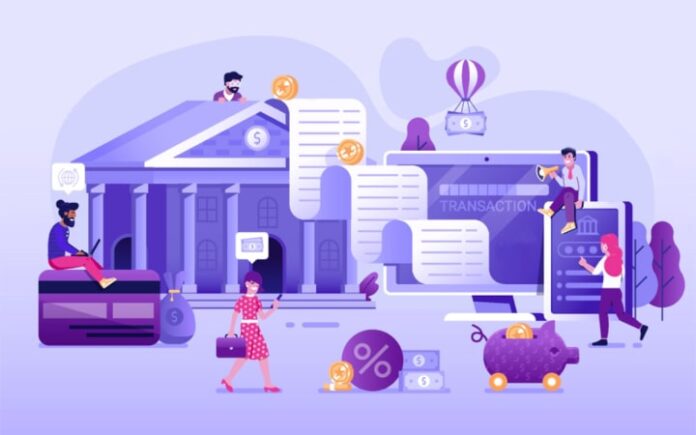In recent years, the internet has been one of the greatest boons for humanity. It has turned the entire world into one giant marketplace where people can communicate in real-time. The internet has made things more convenient for every spectrum of our lives.
The financial services business, particularly banking, is one of the major areas where the benefits of the internet have been used. It has made banking location agnostic, guaranteeing that a person may access financial services regardless of where he or she is. Branchless banking is the industry’s new motto. This article attempts to describe the many elements of the branchless banking system and how access to financial services has been revolutionised.
The COVID-19 problem poses unexpected difficulties to global economies in the short, medium, and long term. Even as countries combat the global crisis, the reaction has clearly demonstrated a lack of resilience at the macro level. The significant drop in global trade, liquidity crisis, credit issues, interrupted income streams, rise in bad debts, reduced cross-border remittances. And lack of access to financing will all have long-term consequences for future economic growth.
What is Branchless Banking?
Branchless banking is financial service delivery outside conventional banks. Frequently through the use of agents to communicate transaction details and communications technology. Usually card reading point-of-sale (POS), or mobile phones. It is capable of dramatically reducing delivery costs and improving consumer convenience.

Approximately 2.6 billion individual’s worldwide lack access to formal financial services and yet one billion have mobile phones. Branchless banking systems use increasingly ubiquitous real-time mobile communications networks. To provide financial services into daily retail establishments, addressing the absence of banking infrastructure in low-income regions.
Benefits of branchless banking
The branchless banking system is becoming more popular as its advantages appeal to those who are short on time.
- Branchless banking benefits the tech-savvy, youthful, or unbanked population. These banks find flaws, issues, or pain spots in traditional bank services and design a product or service. To fill the need, therefore attracting consumers.
- In addition to banking ease from anywhere, clients have access to a range of digital products and services at all times.
- Savings accounts are offered at a competitive rate by branchless banks. In the United States, they offer a savings account interest of 1.50%, compared to regular banks’ 0.01–0.07%. The zero maintenance charges and bulk adjustment of bill payments entice clients to branchless banking. Instead of a limited set of billers that a typical bank would offer, consumers can choose from a variety of billers on the app.
- Branchless banks provide rapid client services through the automation of procedures.
- Quick sign-up forms and automated credit checks allow people to create accounts or apply for mortgages.
- No tiresome paperwork or long waits are involved.
- In addition, chatbots in branchless banks can offer a range of consulting services that can be used 24/7 so the need for typical hours of banking is eliminated.
Future of Branchless Banking Industry
A branchless approach would help banks in many ways. Savings in expenditures like leasing pay and overhead may be around 50%. Also, the efficiency ratio of branchless banks is said to be around 30% higher than 50–80% of the traditional banks.
We anticipate that 40% of banks globally will go branchless during the next five years (the current rate is less than 10%). This change would be fueled by current traditional banks migrating to a branchless model, with the remainder coming from new and existing branchless banks.
While Western nations are leading the way in promoting non-branched banking, we anticipate that emerging markets like India, sub-Saharan Africa, Eastern Europe and Latin America will move considerably. We also anticipate that banks throughout the world will begin to promote less-utilized digital products such as account opening, lending, and electronic check deposits in the future, while more commonly used banking products such as money transfers and bill payments will continue to expand.
The future of global banking is branchless banking. Many more digital-only banks will emerge, while traditional banks will close branches to cut expenses. Meanwhile, Mobile banking solution providers will benefit greatly from this shift.
Advantages of branchless Banking System
Economical Support to the Poor
An opportunity for the lowest strata of society to save money in order to overcome the financial challenges that they face on a regular basis. As a result, a branchless banking platform offers customers to borrow money, receive money, and save money safely and confidently in a regulated and trusted financial environment.
Credit Support
Traditionally, credit was obtained through informal means, making the poor dependent and vulnerable. Branchless banking and financial inclusion allow the underprivileged to obtain loans on fair terms in order to support their ambitions and encourage entrepreneurship.
Direct Payment
Direct Payment to the beneficiary banking provides a secure and reliable payment channel for the government’s public subsidies and welfare programs for the needy. The money from government subsidies and welfare programs is provided directly to the beneficiary through financial inclusion. This reduces leaks in the system and the money reaches the needy, who get it without pilfering.
Wrap up!
People in urban and low-income rural regions continue to benefit from branchless banking. The services are easily available and accessible. Operating expenses are also cheaper; financial institutions may thus provide very competitive rates of interest.
It is safe to say that the road toward branchless banking has just begun throughout the world. As time passes, other distribution methods will develop, all with the goal of maximising consumer convenience. Banks create exceptional experiences for their consumers by focusing on technology and its ability to construct improved banking systems. This is certainly a space to look out for. The future appears to be quite promising.



